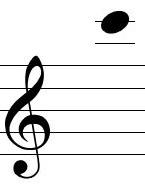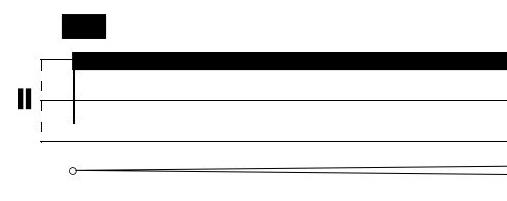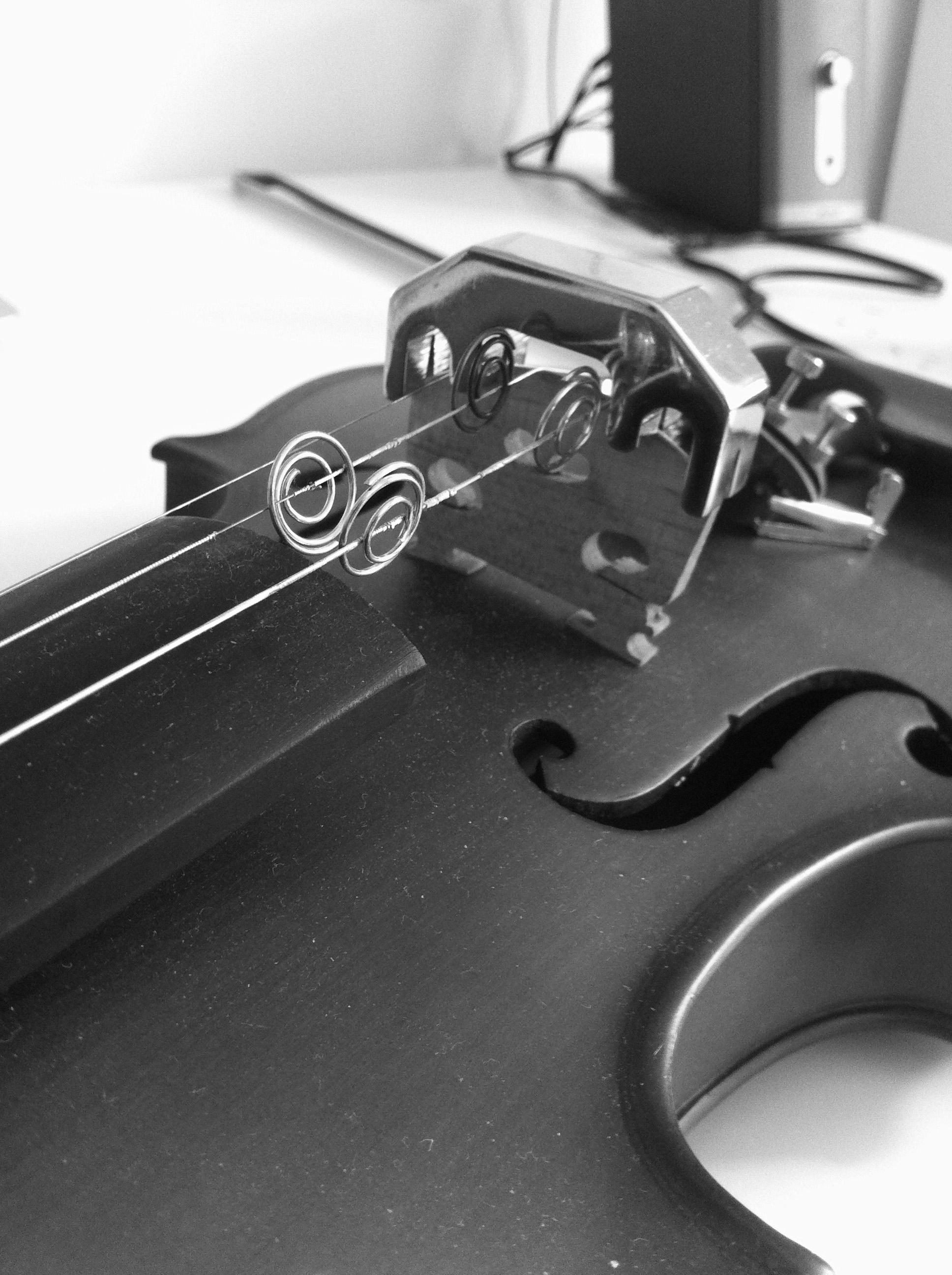IANNOTTA
paw-marks in wet cement (ii)
for Piano, Two Percussionists and Amplifed Ensemble
Score


paw-marks in wet cement (ii)
for Piano, Two Percussionists and Amplifed Ensemble
Score

Score for Piano, Two Percussionists and Amplified Ensemble
LEIP
Commissioned by the Ensemble Orchestral Contemporain Aide à l’écriture d’œuvres musicales originales 2014
- Flute + metal ratchet fixed on a piece of wood [watch the video in the Explanatory-Files folder] + gelinotte birdcall + buzzing bow + waldteufel
- Clarinet in Sib and bass (1) + A4 laminated paper with a paperclip to fix it on the clarinet and (use a bulldog clip to fix the paper on the bell) + waldteufel + block of very hard polystyrene + wire brush (suggested brand: http://amzn.to/2jQLi0v) [watch the video in the Explanatory-Files folder]
- Clarinet in Sib and bass (2) + A4 laminated paper with a paperclip to fix it on the clarinet (use a bulldog clip to fix the paper on the bell) + waldteufel + block of very hard polystyrene + wire brush (suggested brand: http://amzn.to/2jQLi0v) [watch the video in the Explanatory-Files folder] + gelinotte birdcall
- Horn + mute sons bouchés + polystyrene with a cello bow + corrugated conduit (diameter 1.5, length 1.5-2m) + small metal pot with 3 metal thimbles + waldteufel
- Trumpet + wa-wa mute + polystyrene with a cello bow + small metal pot with 3 metal thimbles + waldteufel
- Trombone + + wa-wa mute + polystyrene with a cello bow + small metal pot with 3 metal thimbles + waldteufel
- Percussion 1 : Check the piano’s preparation
Wa-Wa tube medium register
Crotales on a timbale (from bar 230)

Crotale with bow

Corrugated Conduit
Tam-Tam with a cello bow
Gelinotte birdcall
- Percussion 2 : Check the piano’s preparation
Bass Drum
Metal ratchet fixed on a piece of wood [watch the video in the Explanatory-Files folder]
Corrugated Conduit
Cymbal 18 with a cello bow
Gelinotte birdcall
Waterphone
- Prepared piano: 4 singing bowls of different sizes, 3 magnets, pata-fix, fishing line, e-bow, vibrator (see the key page) + gelinotte birdcall
- Harp + gelinotte birdcall + waldteufel + 2 honey spoons between the strings + piano machine (see key page) + 2 e-bows

- Violin 1 + metal mute + 4 circular, metal paperclips +2 metal thimbles
- Violin 2 + metal mute + 4 circular, metal paperclip + 2 metal thimbles
- Viola + wooden mute + 4 circular, metal paperclip + 2 metal thimbles
- Cello + wooden mute + metal mute + 1 circular paperclip + 2 metal thimbles
- 5-string double bass (5th string tuned one octave below) + ordinary mute + low spring-drum
Amplification: all the instruments have to be amplified.
Accidentals apply only to those notes before which they are placed, with the exception of repeated notes.
Piano and Percussions
Position of the 2 percussionists: the first percussionist has to be close to the strings in the higher register ; the second percussionist has to be close to the strings in the lower register.
Preparation: Put some tape on last fifth (f-c) in the high register to damp the strings.
Magnets: (3 Neodymium Cylinder: 60mm height, 12mm diameter): position the magnets on the indicated strings in the image. Lightly touch the tip of the magnets and let vibrate (tremolo effect).
Vibrator: put a vibrator on the last two strings of the piano in the low register cover with tape in order to damp a bit the vibration. The vibrator has to capable of very low power settings. Suggested brand: http://www.amazon.com/gp/product/B00GL50RI8?psc=1&redirect=true&ref_=oh_aui_detailpage_o00_s00
Pata-fix: check the image on the following page to understand where to put the pata-fix. For the natural harmonics, here is where the pata-fix has to be put.

Fishing Line: the exact position and strings for the fishing line is up to the performer, similarly the blu-tack or pata-fix on these strings should be positioned freely so as to produce harmonics.

Waldteufel: this instrument is played in two ways

Sound 1: The thread has to be tight and it has to move in circle [watch the video in the Explanatory-Files folder]
Sound 2: The thread has slide on the skin of the instrument [watch the video in the Explanatory-Files folder].

Gelinotte (grouse) Birdcall: it can be purchased here: http://www.qbc.fr/index.php?cPath=23_21&osCsid=4cb45019efa6d2cff5c3cf7396045f26.
Preparation of the bass clarinet: cover the bell of the clarinet with a stiff sheet of paper a laminated A4 sheet is suitable fixed with a bulldog clip. The sonic result is low buzzing sound.
Brass: the three musicians need to have a table in front of them where to put the objects that they have to use.
Honey spoons: place 2 wooden honey spoons between two strings. The pitch and the position are not important, but it should be in the high register.
Piano machine: instructions are written in the score. Please check also the videos in the Explanatory Files folder.
Violins 1: Prepare the strings 1 and 2 with circular paperclips (one AST and one MSP)
Violins 2: Prepare the strings 2 and 3 with circular paperclips (one AST and one MSP)
Viola: Prepare the strings 3 and 4 with circular paperclips (one AST and one MSP).
NB: the preparation changes during the piece!
Cello: from measure 266 the III string is prepared with a circular paperclip close to AST.




AST = alto sul tasto
T = al tasto
PO = posizione ordinaria
SP = sul ponticello

Measures 225–233: damp the strings and play with a very slow speed of the bow. The sound must be broken, perforated, with small silences inside. One grain at the time The 3 lines represent the register of the instrument (high, medium, low).
MSP = molto sul ponticello
MV = molto vibrato
V = vibrato
NV = non vibrato
l.b. = legno battuto
c.l.t. = col legno tratto
1/2 = 1/2 legno
toWilhemLatchoumia paw-marksinwetcement(ii) for piano, two percussionists, and amplified ensemble
Score in C (2015–18)
[start to add silences between the noises. There should be more and more silences, but it has to happen gradually]
[start to add silences between the noises. There should be more and more silences, but it has to happen gradually]
[start to add silences between the noises. There should be more and more silences, but it has to happen gradually]
( h )( h )
h ) [start to add silences between the noises. There should be more and
[start to add silences between the noises. There should be more and more silences, but it has to happen gradually]
[start to add silences between the noises. There should be more and more silences, but it has to happen gradually]

Clara Iannotta
Clara Iannotta (b. 1983 in Rome) is particularly interested in music as an existential, physical experience. She studied at the Milan and Paris Conservatories, IRCAM and Harvard University. Her music has been commissioned and performed by renowned ensembles and orchestras, including Quatuor Diotima, Ensemble Intercontemporain, Klangforum Wien, Neue Vocalsolisten Stuttgart, Münchener Kammerorchester and WDR Symphony Orchestra. She was a fellow of the Berliner Künstlerprogramm (2013) and Villa Medici (2018–19) and the recipient of several awards including the 2018 Ernst von Siemens Composers’ Prize and the 2018 Hindemith Prize. Her portrait albums A Failed Entertainment and Earthing were selected by the German Record Critics’ Awards for their Quarterly Critics’ Choices. In 2014–2021 Iannotta was artistic director of the Bludenzer Tage zeitgemäßer Musik, becoming joint artistic director of Klangspuren Schwaz in 2022.
Clara Iannotta (*1983 in Rom) setzt sich mit Musik als existenzieller, körperlicher Erfahrung auseinander. Sie studierte an den Konservatorien in Mailand und Paris, am IRCAM und an der Harvard University. Ihre Werke wurden von namhaften Ensembles und Orchestern in Auftrag gegeben und gespielt, darunter das Quatuor Diotima, das Ensemble Intercontemporain, Klangforum Wien, die Neuen Vocalsolisten Stuttgart, das Münchener Kammerorchester und das WDR Sinfonieorchester. Sie war Stipendiatin des Berliner Künstlerprogramms (2013) und der Villa Medici (2018/19) und erhielt u.a. den Förderpreis der Ernst von Siemens Musikstiftung 2018 und den Hindemith-Preis 2018. Ihre Porträtalben A Failed Entertainment und Earthing standen auf der Bestenliste der deutschen Schallplattenkritik. 2014–2021 leitete sie die Bludenzer Tage zeitgemäßer Musik, ab 2022 als Teil einer künstlerischen Doppelspitze das Festival Klangspuren Schwaz.